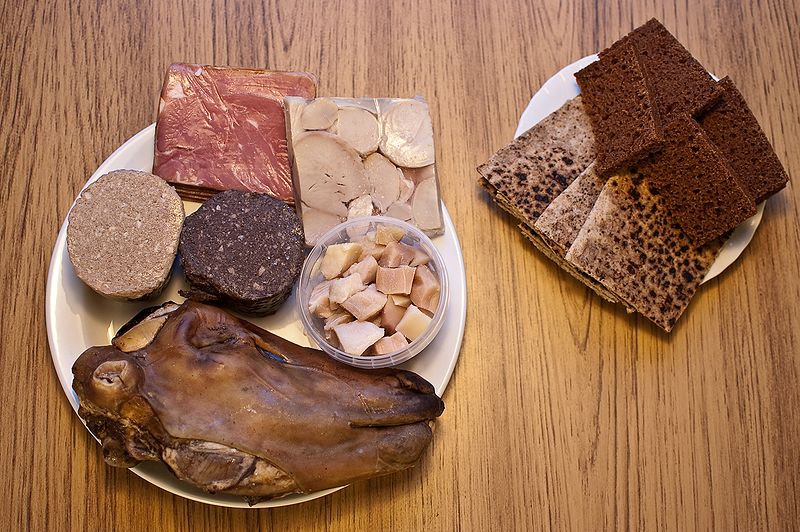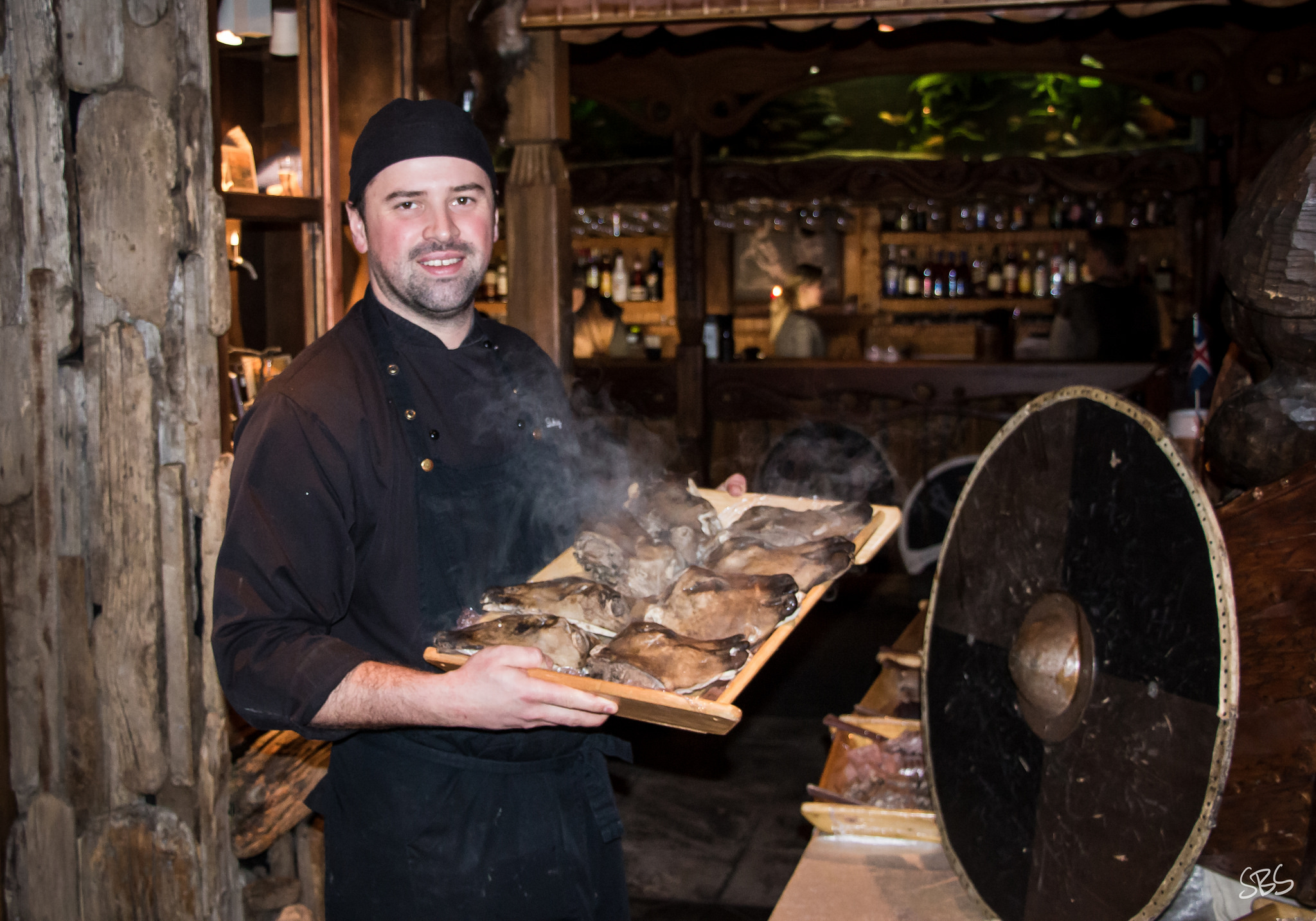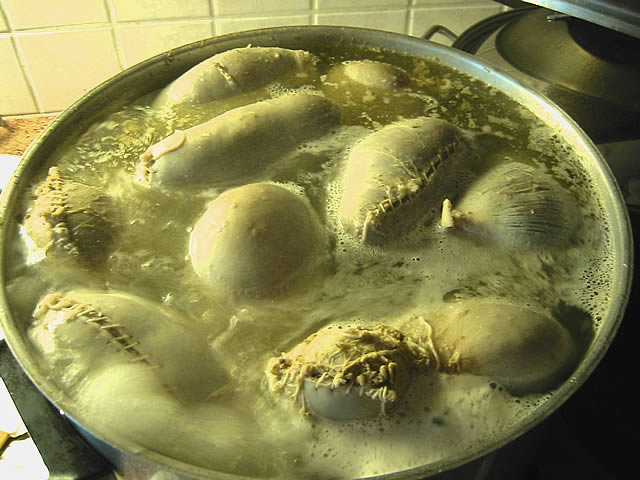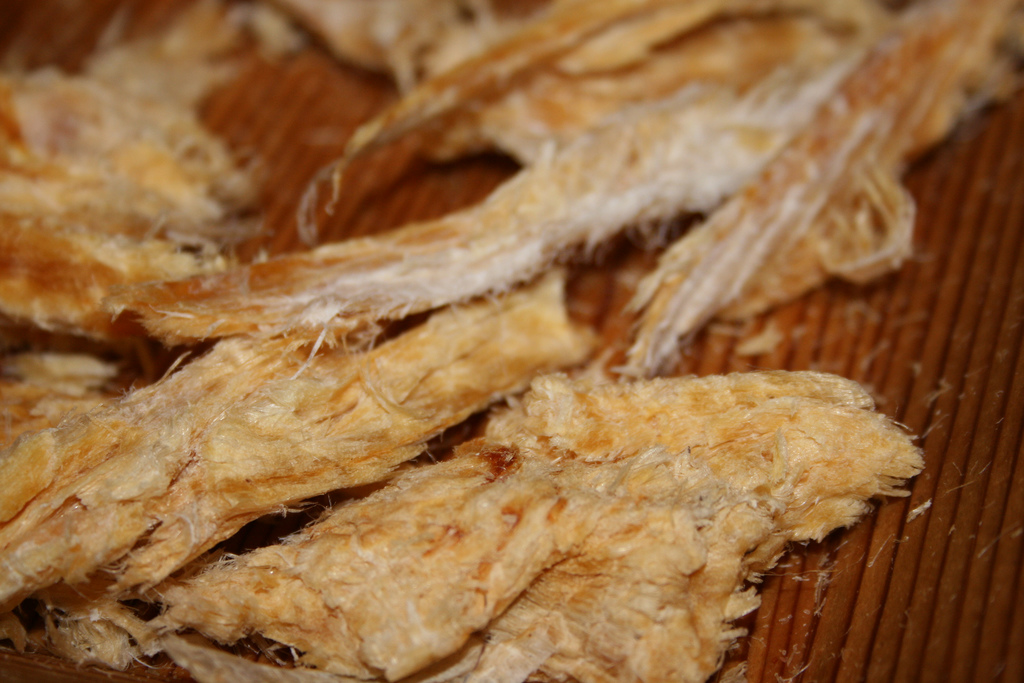Icelandic midwinter feast, Þorrablót. Posted by hulda on Jan 28, 2016 in Icelandic culture, Icelandic customs
In the deepest winter Icelanders celebrate Þorri, the personification of winter: that’s when traditional foods are served along with strong liquor, preferably Brennivín.The celebration bears the name Þorrablót, a clear reminder of its Pagan roots – a blót is a ritual sacrifice or a feast held to honour a god or gods.
The tradition died out once already but was then revived by Icelandic students in Copenhagen in 1873 and today it’s an important holiday, often celebrated with family or friend groups. Sounds good? Well… just wait until you see the foods. Iceland has always been a harsh country and surviving a winter took some serious effort, especially food-wise. As very few things can grow in the Icelandic soil and climate the diet was heavily meat and fish based, but these came with a problem of their own, they spoiled easily. To help preserve meat and fish they were often either dried or lactose-cured, which means they’re soured and have a very distinctive sour milk taste to them.
Hákarl
This might be Iceland’s most famous traditional snack, the rotten/fermented, shark. Many have tried it, many have failed to keep it down. The taste is quite overpowering and is has a slightly rubbery mouth feel, but my least favourite part would still be the ammonia smell. Why would people decide to eat this in the first place? Possibly because it was really so difficult to find food for the winter in Iceland that anything and everything counted, among them shark meat that was poisonous… the fermenting process is there to make the shark edible.
Súrhvalur
I have nothing good to say about this one. Fermented whale blubber, looks like snot, has slimy-ish, stringy and chewy mouth feel and tastes… well, gross. Worse than hákarl in my opinion. I can only fight this one down with brennivín, else it swims right back up.
Harðfiskur
“Hard fish”, in other words dry fish, is actually not that bad! It does have a strong fish-smell and the taste is stronger than in non-dry fish, so if you don’t like fish I can guarantee you’ll hate this one. Often eaten with a bit of butter spread on top or just as it is, harðfiskur is a healthy option for a snack.
Hangikjöt
Smoked lamb meat, delicious! The taste of smoke is quite strong, and if you can find home-smoked hangikjöt all the better! This is really one of the foods that tastes heavenly when home-made although the store bought version isn’t that bad either.
Lifrarpylsa
Liver sausage. A bit dull-tasting on its own, so some people like to fry the slices with butter and sprinkle a little bit of sugar on top to better bring out the taste of liver. Some of course prefer theirs just as it is.
Blóðmör/slátur
Blood pudding made of sheep blood, suet, oats and rye flour, sewn into a sheep stomach and boiled. It’s good if you like blood pudding, but it could be a little bit on the acquired taste -area.

Thorramatur by The blanz at Wikimedia Commons. The bread plate has flatbrauð and rúgbrauð, the main plate from the top has hangikjöt, hrútspungar, lifrarpylsa, slátur, hákarl and of course svið.
Flatbrauð
“Flat bread”, the name is very apt. Yes, it’s flat. It’s very flat. It’s quite mild but has a strong smoky taste, making it a perfect base for hangikjöt.
Rúgbrauð
Sweet, dark bread. Don’t let the look of the bread scare you away, this is probably the safest item on your Þorri-plate!
Svið
A boiled sheep’s head. Looks scary but tastes actually really, really good (as long as you like sheep that is)! Traditionally everything on it would be eaten but nowadays it’s recommended people don’t eat the brain for health reasons. Some people eat the eyes, some people don’t, some only eat the muscles around the eyes. Suggesting eating the eye is a common dare for tourists.
Selshreifar
Another gross one, fermented seal flipper. Even stringier and slimier than the sour whale and just… no. NONONO. I’ve tried this once and now, many years after, I still regret having ever tried it.
Hrútspungar
Ram testicles. I’m not kidding, pressed, sour ram testicles. The best I can say of this dish is that it’s truly unforgettable; sour with strong yeast flavour, the mouth feel itself is bad enough (and the knowledge of what part of the animal you’re eating) but the taste alone would need a shot of brennivín per mouthful…
So there you have the menu. It may not have all the above items and it may have items not mentioned in this blog post, but you’ll no doubt meet a few of these anyway. Don’t worry too much though, no one expects you to like them all because as so often is with traditional food, not even the locals all like all of them. Trying them will get you some serious Icelandic points though, so – bon appetit! 😀

Build vocabulary, practice pronunciation, and more with Transparent Language Online. Available anytime, anywhere, on any device.
About the Author: hulda
Hi, I'm Hulda, originally Finnish but now living in the suburbs of Reykjavík. I'm here to help you in any way I can if you're considering learning Icelandic. Nice to meet you!








